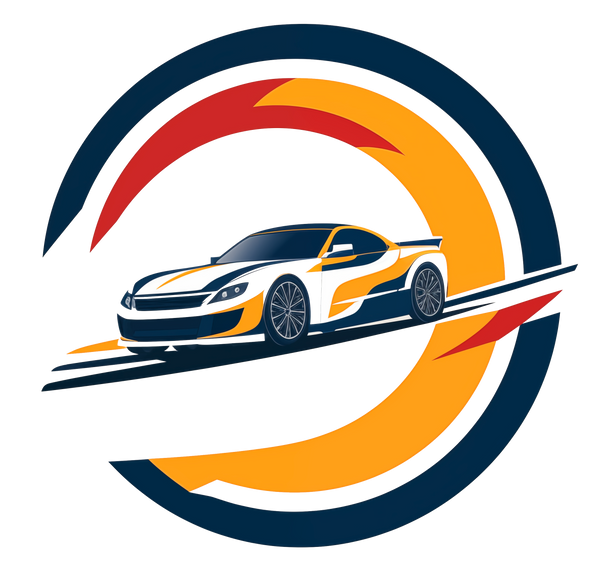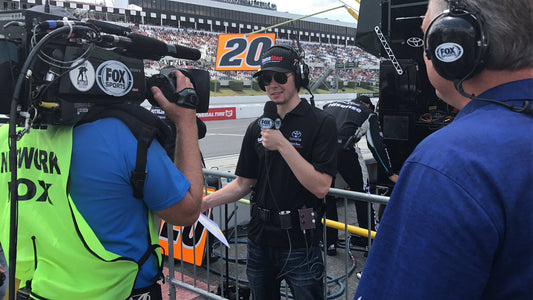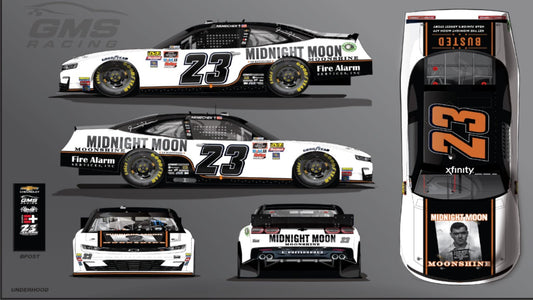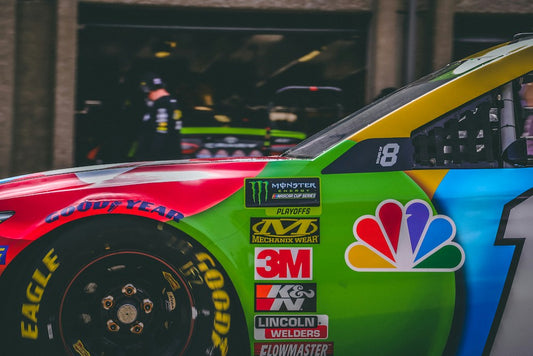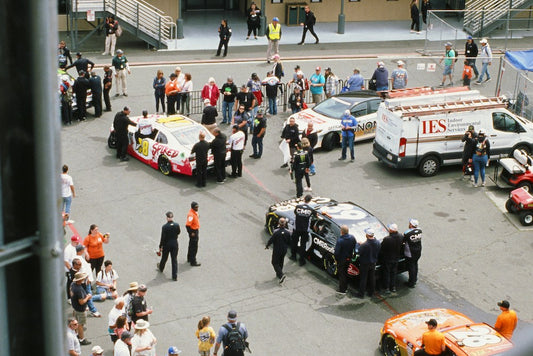Revolutionizing NASCAR Viewing with Future Broadcast Technology
The world of sports broadcasting has seen tremendous advancements in technology over the years, and NASCAR coverage is no exception. As fans of the sport, we have witnessed the evolution of broadcast technology that has significantly enhanced our viewing experience. However, the future holds even more exciting possibilities for NASCAR coverage. In this blog post, we will explore the future of broadcast technology in NASCAR and how it is set to revolutionize the way we watch the sport.
Virtual and Augmented Reality
One of the most anticipated advancements in NASCAR coverage is the integration of virtual reality (VR) and augmented reality (AR) technology. VR allows fans to immerse themselves in the race as if they were sitting in the driver's seat, experiencing the adrenaline rush firsthand. AR, on the other hand, overlays digital information on the real-world view, providing fans with additional insights and statistics.
Imagine being able to put on a VR headset and feel like you're right there on the track, surrounded by roaring engines and screeching tires. You can look around and see the action from every angle, experiencing the race in a way that was never before possible. This technology has the potential to transport fans from the comfort of their living rooms to the heart of the NASCAR action.
Companies like Google and ESPN are leading the way in VR and AR technology. They are investing in research and development to create immersive experiences for NASCAR fans. By collaborating with NASCAR and using cutting-edge technology, these companies are working towards creating a viewing experience that is unparalleled.
High-Definition Broadcasts and Multiple Camera Angles
Visual clarity is crucial in capturing the thrilling moments of a race, and advancements in camera technology have made it possible to provide viewers with crystal-clear images.
With high-definition broadcasts, fans can see every detail of the race, from the cars' paint jobs to the expressions on the drivers' faces. Multiple camera angles allow for a more dynamic viewing experience, enabling fans to switch between different perspectives and get a comprehensive view of the race.
Companies like Sony and Panasonic are at the forefront of camera technology for NASCAR coverage. They are constantly innovating and developing new cameras that can capture the fast-paced action of a race with precision and clarity. These advancements in camera technology have greatly enhanced the viewing experience for NASCAR fans.
Real-Time Data and Graphics
From live timing and scoring to in-depth statistics, real-time data enhances our understanding of the race and adds another layer of excitement.
Graphics overlays are used to display information such as driver positions, lap times, and fuel levels, allowing fans to track the progress of their favorite drivers. These graphics are constantly updated in real-time, ensuring that viewers stay informed throughout the race.
Companies like IBM and SAP specialize in providing real-time data for NASCAR coverage. They work closely with NASCAR to collect and analyze data, enabling broadcasters to present accurate and up-to-date information to viewers.
Challenges in Harnessing Technology for NASCAR Coverage
One of the major hurdles is bandwidth and connectivity issues. With the increasing demand for high-quality streaming and real-time data, ensuring a reliable and fast internet connection is essential.
Another challenge is the cost of implementing new technology. Upgrading broadcast equipment and infrastructure can be a significant investment for networks and broadcasters. However, the potential benefits, such as increased viewership and engagement, make it a worthwhile endeavor.
Balancing technology with the traditional viewing experience is another challenge. While advancements like VR and AR can enhance the viewing experience, it is important to strike a balance and not lose sight of the traditional aspects that make NASCAR special. The sound of the engines, the smell of burning rubber, and the camaraderie among fans are elements that should not be overshadowed by technology.
Companies like Cisco and Verizon are working towards providing solutions for these challenges. They are investing in technologies that can improve bandwidth and connectivity, as well as offering cost-effective solutions for broadcasters. By addressing these challenges, they are paving the way for a seamless integration of technology in NASCAR coverage.
Impact of Virtual Reality on NASCAR Viewing Experience
Virtual reality has the potential to revolutionize the way fans engage with the sport of NASCAR. By putting on a VR headset, fans can feel like they are part of the action, experiencing the race like never before. They can choose their vantage point, switch between drivers' perspectives, and even interact with other fans in virtual environments.
Imagine being able to attend a race without the limitations of physical attendance. VR technology can transport fans to any track around the world, giving them the opportunity to experience the thrill of NASCAR from the comfort of their own homes. This opens up new possibilities for fans who may not have the means or opportunity to attend races in person.
Companies like Oculus and HTC are pioneers in VR technology. They are continuously pushing the boundaries of what is possible in virtual reality, creating immersive experiences for NASCAR fans. Through collaborations with NASCAR, these companies are shaping the future of the sport and redefining the fan experience.
Integration of 5G Network
5G, the fifth generation of wireless technology, promises faster speeds, lower latency, and increased network capacity. This means that fans will be able to stream high-definition content, access real-time data, and engage with interactive features without any lag or buffering.
With 5G, the possibilities for NASCAR coverage are endless. Fans can enjoy seamless streaming of races, switch between camera angles without any delay, and participate in interactive experiences. This technology can bring fans closer to the action and enhance their overall viewing experience.
Companies like Verizon and AT&T are leading the way in providing 5G technology. They are working with NASCAR to deploy 5G networks at race tracks, ensuring that fans have access to high-speed connectivity. By leveraging the power of 5G, these companies are transforming the way we watch and engage with NASCAR.
Conclusion
Advancements in virtual reality, high-definition broadcasts, real-time data, and 5G connectivity are set to revolutionize the way we watch and engage with the sport. Companies like Intel, Fox Sports, Sony, Panasonic, SMT, Stats Perform, Cisco, Verizon, Oculus, HTC, and AT&T are at the forefront of these advancements, working towards creating immersive experiences for NASCAR fans.
As technology continues to evolve, we can expect even more exciting advancements in NASCAR coverage. The potential for continued improvements and innovations is vast, and it is an exciting time to be a fan of the sport. As we embrace these new technologies, it is important to strike a balance between innovation and tradition, ensuring that the core elements that make NASCAR special are not lost.
In conclusion, the future of broadcast technology in NASCAR is bright, and it holds the promise of transforming the way we watch and engage with the sport. The advancements in virtual reality, high-definition broadcasts, real-time data, and 5G connectivity are set to enhance our viewing experience and bring us closer to the action. As fans, we can look forward to an exciting future of NASCAR coverage, where technology takes us beyond the confines of our living rooms and brings us right into the heart of the race.
